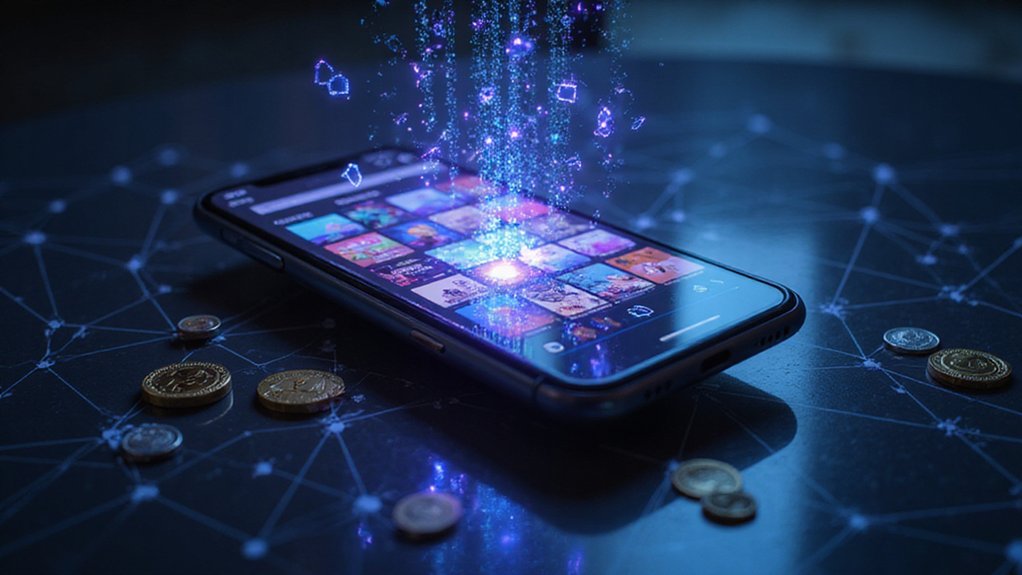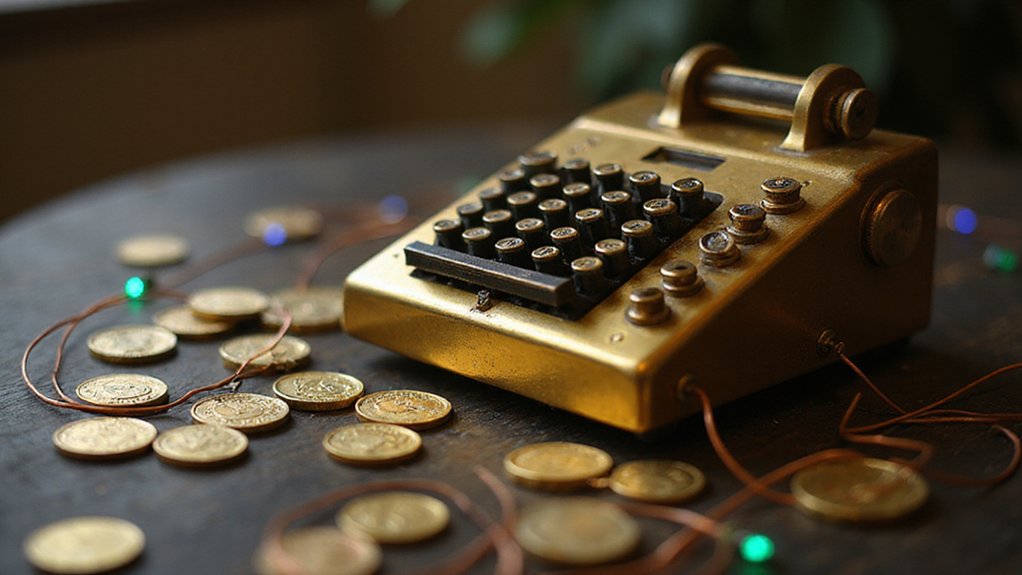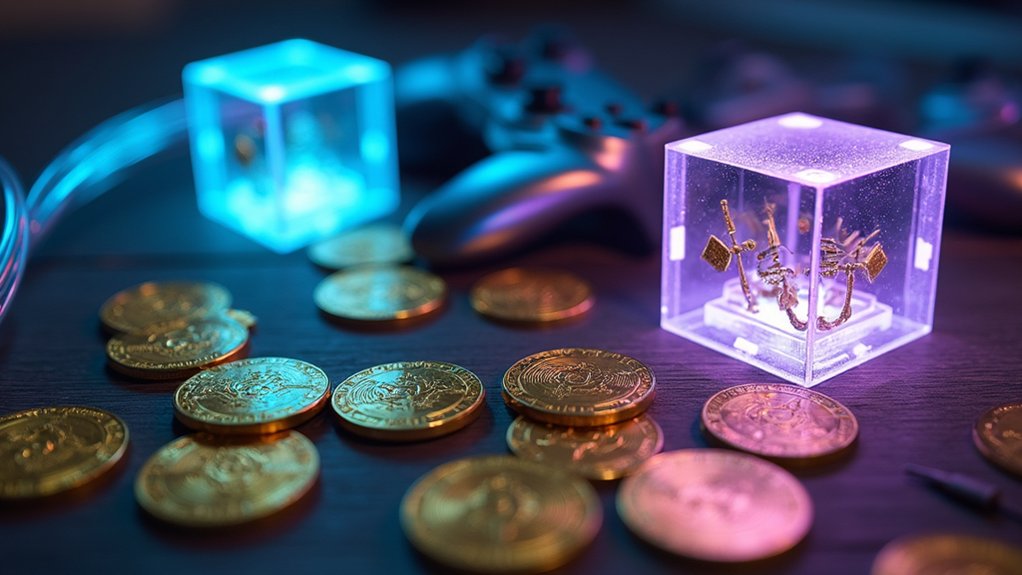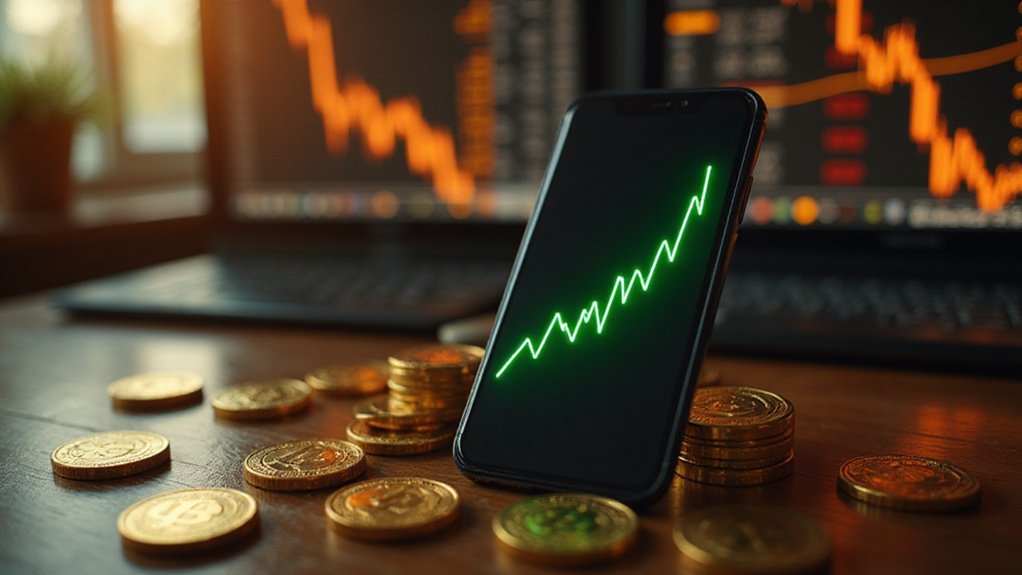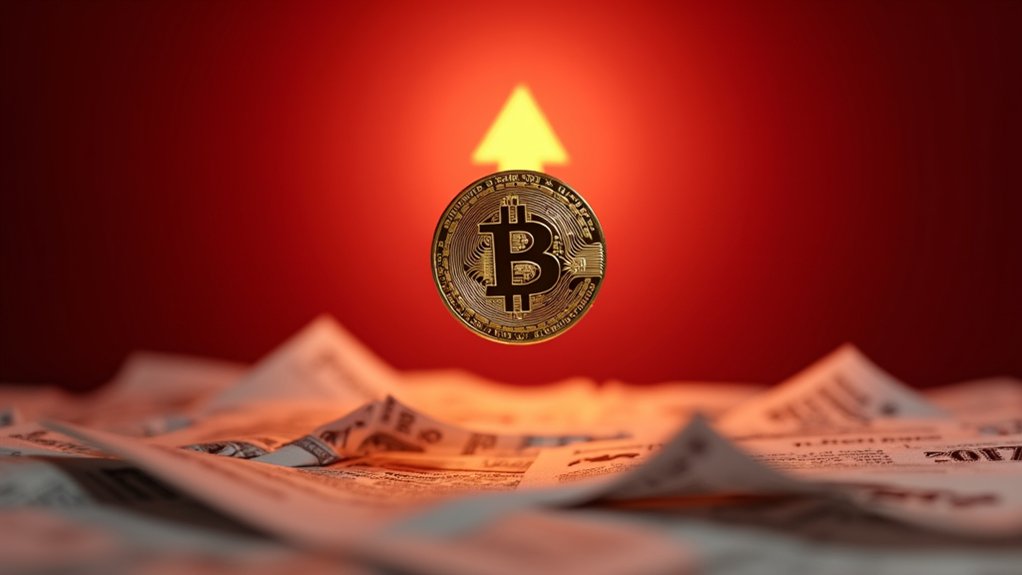NFT marketplaces operate as digital trading platforms where creators mint unique blockchain tokens representing ownership of digital assets—ranging from pixelated artwork to virtual real estate. These platforms like OpenSea and Rarible facilitate transactions through smart contracts, automatically executing trades while recording immutable ownership records. Buyers basically purchase blockchain-verified receipts proving ownership of particular code strings, often at astronomical prices that would make traditional art dealers blush. Understanding the underlying mechanics reveals why this ecosystem continues fascinating both ardent believers and skeptical observers.

Where exactly does one go to purchase a jpeg of a cartoon ape for the price of a luxury automobile? The answer lies in NFT marketplaces—digital platforms that have transformed the concept of ownership in ways that would have seemed absurd just a decade ago.
These online venues function as sophisticated galleries where Non-Fungible Tokens change hands with remarkable frequency and, occasionally, eye-watering prices.
Unlike traditional marketplaces, these platforms leverage blockchain technology to facilitate the trading of unique digital assets, from pixelated art pieces to virtual real estate that exists only in cyberspace.
NFT platforms transform digital ownership through blockchain infrastructure, enabling commerce in assets that exist purely as code and metadata.
The underlying infrastructure guarantees that each transaction is recorded immutably, creating an unbreakable chain of provenance (assuming one values digital provenance over, say, tangible assets).
The operational mechanics involve smart contracts—automated agreements that execute when predetermined conditions are met.
When a buyer decides to acquire a digital collectible, these contracts handle the ownership transfer without human intervention, recording the transaction on the blockchain while the actual asset often resides off-chain through systems like IPFS.
Users connect their digital wallets to platforms such as OpenSea, Rarible, or SuperRare, each offering different experiences ranging from mass-market accessibility to curated exclusivity. These platforms provide eWallet integration with services like Formatic and Coinbase for convenient token storage and management.
The marketplace ecosystem encompasses various asset categories: digital art dominates headlines, but music, gaming items, and virtual properties also command substantial attention.
Creators mint their works directly onto blockchain platforms, establishing scarcity in a medium where infinite reproduction was previously the norm—a fascinating inversion of digital economics. Beyond art and collectibles, these platforms also facilitate trading of domain names and other digital assets that hold significant commercial value.
These platforms serve multiple constituencies simultaneously.
Artists gain monetization opportunities for digital creations that previously held little commercial value.
Collectors acquire proof of ownership for assets that exist primarily as metadata and smart contract references.
Investors speculate on appreciation potential in markets where fundamental analysis proves challenging at best.
The transaction process begins with minting, progresses through marketplace listing, and concludes with blockchain confirmation. Additionally, most platforms display rarity information alongside provenance details, enabling buyers to make more informed decisions about their potential acquisitions.
Each step involves gas fees, platform commissions, and various technical considerations that can substantially impact net proceeds.
Whether this represents democratization of art markets or elaborate digital tulip mania remains hotly debated among financial observers.
Frequently Asked Questions
What Fees Do NFT Marketplaces Charge for Buying and Selling?
NFT marketplace fees vary considerably, with transaction costs ranging from X2Y2’s modest 0.5% to Rarible’s rather aggressive 5% total (charging both parties).
OpenSea commands 2.5% despite its market dominance, while LooksRare and Magic Eden settle at 2%.
These platform fees exclude creator royalties and network gas fees—because why simplify when you can layer multiple cost structures?
The fee disparity substantially impacts profitability calculations for both collectors and creators.
How Do I Verify if an NFT Is Authentic Before Purchasing?
Buyers should examine the NFT’s blockchain record through its unique identifier, verifying ownership history and smart contract authenticity.
Reputable marketplaces typically display verification badges, though savvy collectors cross-reference contract addresses on blockchain explorers like Etherscan.
One might check the creator’s official social media for legitimate collection announcements—because apparently we now need Twitter verification for digital art authenticity.
The immutable blockchain record remains the ultimate arbiter, assuming buyers understand what they’re actually purchasing.
Can I Sell NFTS on Multiple Marketplaces Simultaneously?
Yes, creators can simultaneously list NFTs across multiple marketplaces—though each platform’s distinct fee structures and policies create a labyrinthine landscape of considerations.
Cross-platform compatibility varies greatly, with some marketplaces embracing integration while others maintain exclusivity requirements.
Smart contract standards (like ERC-721) facilitate this multi-marketplace approach, yet blockchain flexibility remains constrained by technical limitations.
The strategy amplifies discoverability but demands careful navigation of competing marketplace policies and transaction costs.
What Happens if an NFT Marketplace Shuts Down Permanently?
When NFT marketplaces shutter permanently, users typically retain ownership since NFTs exist on blockchain networks independently of platforms.
However, marketplace closures eliminate user-friendly trading interfaces and management tools, potentially complicating asset access.
Smart contracts usually remain functional, allowing withdrawals and transfers.
The broader implications prove more severe: native token values collapse (often exceeding 99% declines), market liquidity evaporates, and investor confidence erodes across the ecosystem.
Do I Need Cryptocurrency to Buy NFTS or Accept Fiat Currency?
Traditionally, NFT purchases required cryptocurrency and digital wallets—a barrier that conveniently excluded those unwilling to navigate blockchain complexities.
However, platforms like Crossmint now accept fiat currency, automatically converting dollars to crypto behind the scenes.
Payment processors including Stripe facilitate this shift, though availability remains limited across marketplaces.
The irony? After years of crypto evangelism, the industry now scrambles to accommodate traditional payment methods for mainstream adoption.
